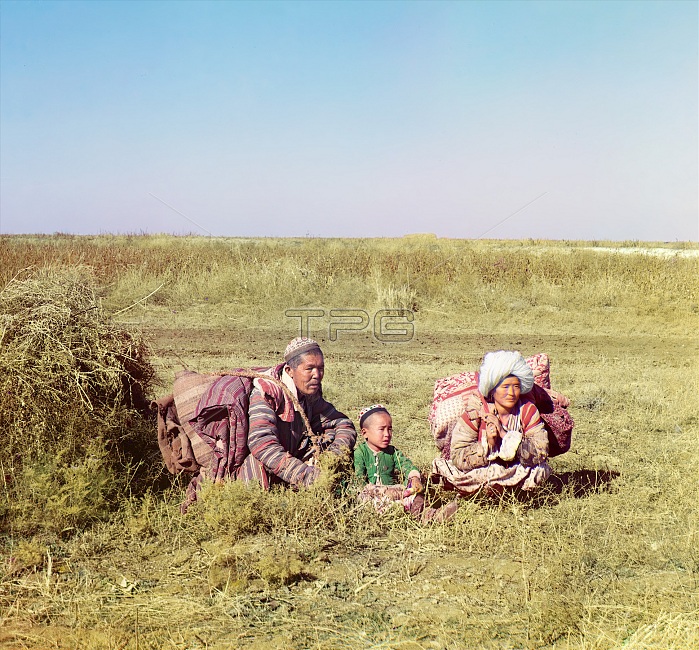
Nomadic Kirghiz, Golodnaia (or Golodnaya) Steppe, between 1905 and 1915. Family of three, kneeling in a field. Many Central Asiatic peoples, for example the Kirghiz, Kazakhs, and Uzbeks, lived nomadic lives on the steppes, valleys, and deserts, migrating seasonally from one place to another as opportunities for obtaining food, water, and shelter changed. Shown here is a young Kazakh family in colorful traditional dress moving across the Golodnaia (or "Hungry") steppe in present-day Uzbekistan and Kazakhstan. Russian chemist and photographer Sergey Prokudin-Gorsky (1863-1944) was a pioneer in colour photography which he used to document early 20th-century Russia and her empire, including the vanishing way of life of tribal peoples along the Silk Route in Central Asia. In a railway-carriage darkroom provided by Czar Nicholas II, Prokudin-Gorsky used the three-colour photography process to record traditional costumes and occupations, churches and mosques - many now Unesco World Heritage sites - as well as modernisation in agriculture, industry and transport.
| px | px | dpi | = | cm | x | cm | = | MB |
Details
Creative#:
TOP29697746
Source:
達志影像
Authorization Type:
RM
Release Information:
須由TPG 完整授權
Model Release:
Not Required
Property Release:
Not Required
Right to Privacy:
No
Same folder images:

 Loading
Loading